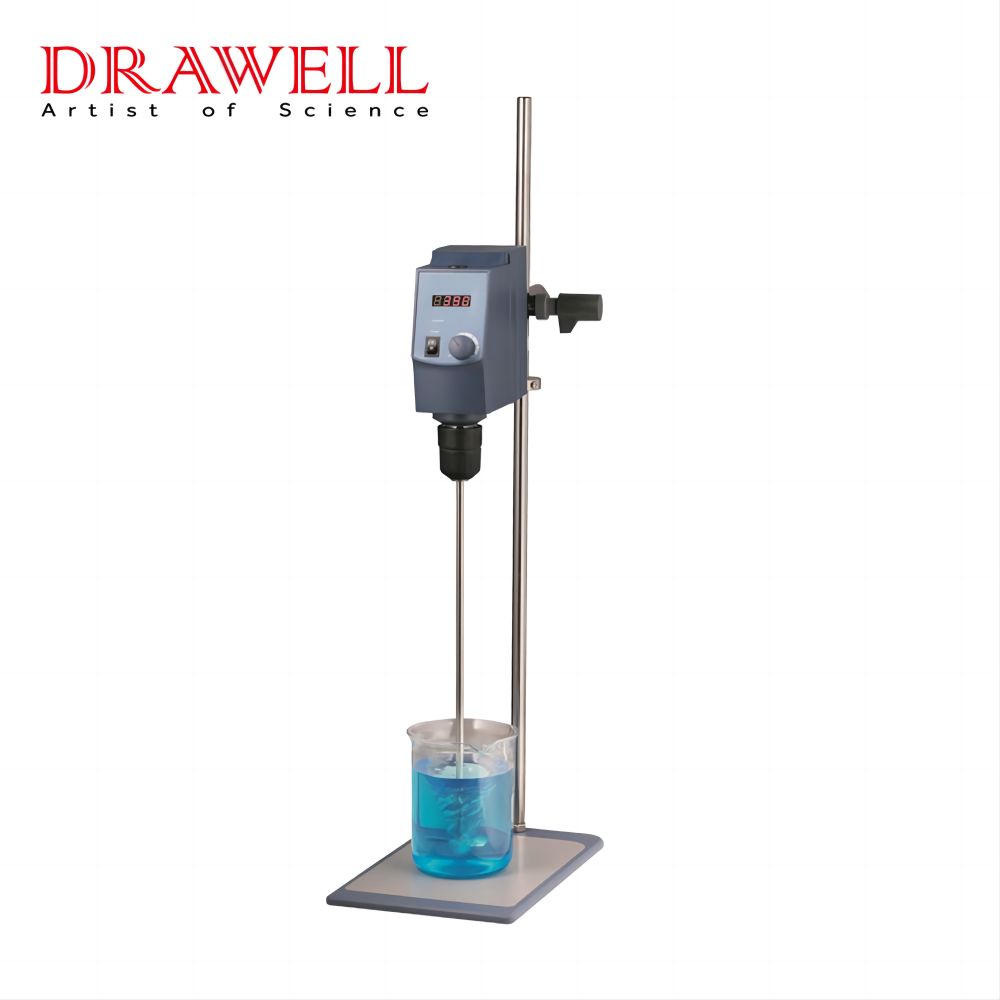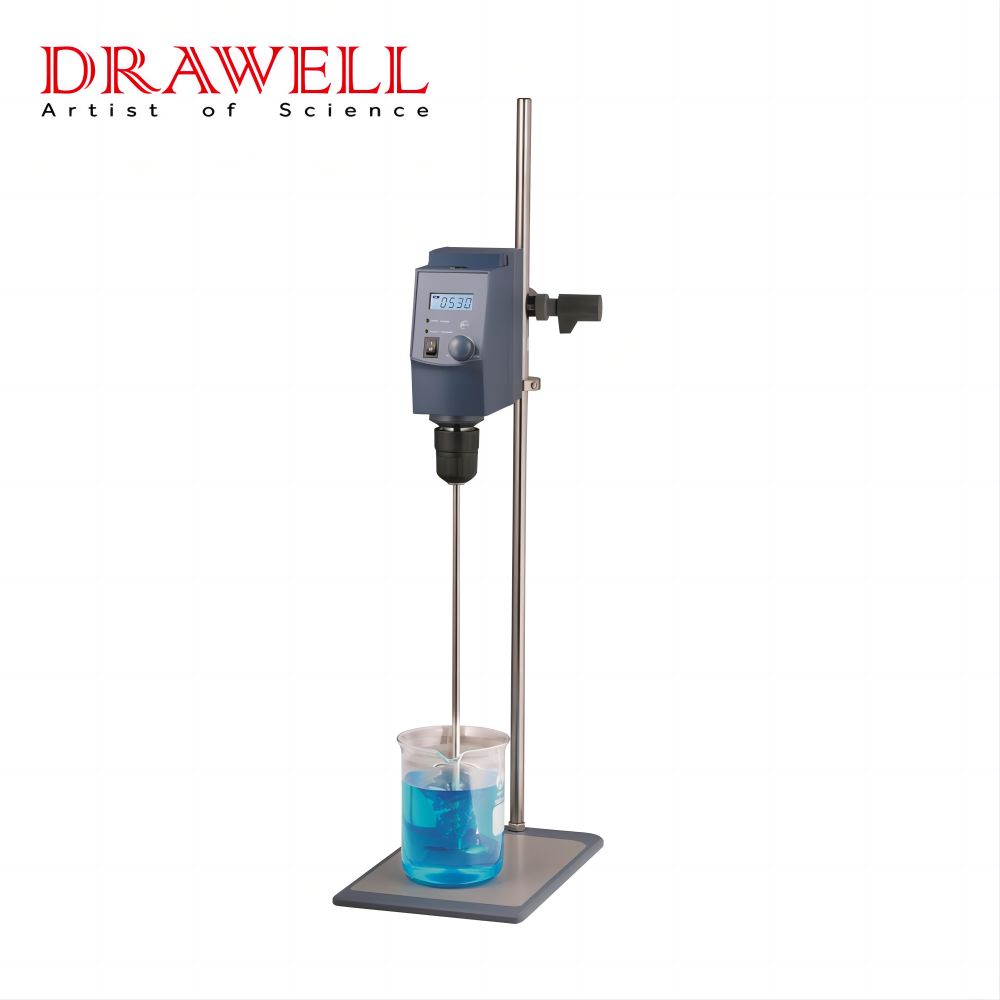Gone are the days of laborious manual stirring and imprecise analog dials. The modern laboratory demands efficiency, accuracy, and reproducibility, and digital overhead stirrers have risen to meet this challenge. These versatile instruments offer a level of control and convenience that was once unthinkable, streamlining workflows and ensuring consistent mixing in a wide range of applications. Whether you’re blending delicate biological samples, homogenizing viscous solutions, or synthesizing complex compounds, a digital overhead stirrer can be your indispensable laboratory partner. This guide exploring their essential components, the advantages they offer over traditional methods, and the diverse range of options available from Drawell. We’ll also address common troubleshooting tips to ensure your digital stirrer operates smoothly and reliably. Now, let’s dive into this guide and discover how a digital overhead stirrer can elevate your research to new heights.
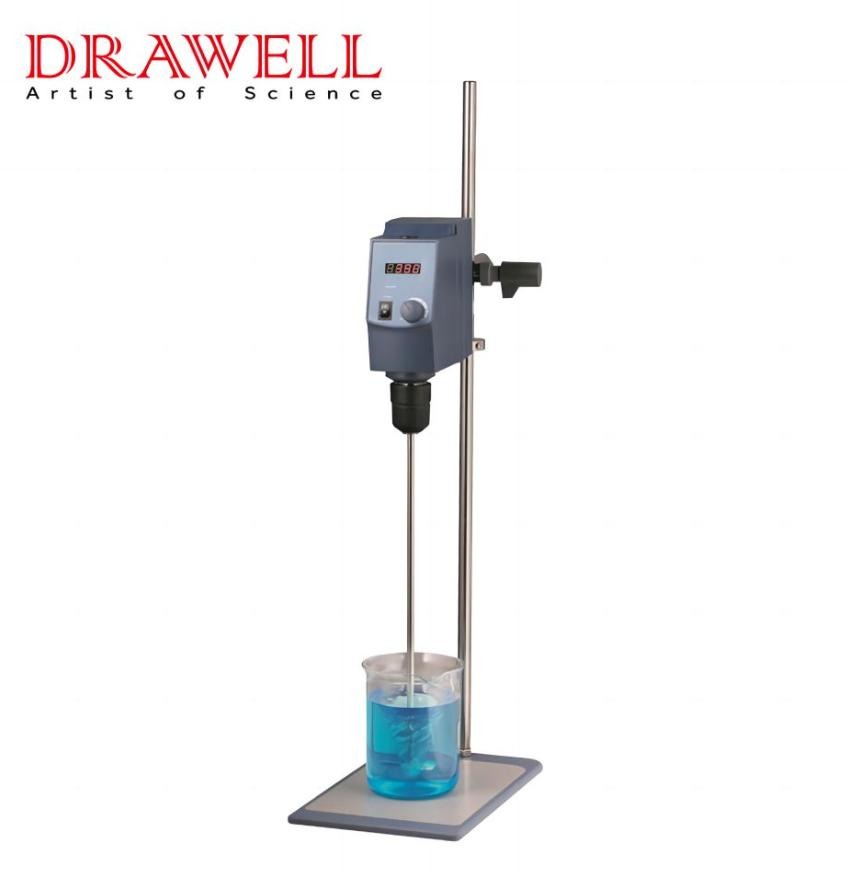
Why we Choose Digital Overhead Stirrers?
Digital overhead stirrers are laboratory instruments used to mix liquids by rotating a stir bar at a controlled speed. The stirrer motor is mounted on a stand above the vessel, and the stir bar is attached to a shaft that is lowered into the liquid. Digital overhead stirrers offer a number of advantages over traditional methods, such as:
- Precise speed control: Digital overhead stirrers allow you to set the stirring speed with great precision, which is essential for many laboratory applications.
- Wide speed range: Digital overhead stirrers can typically stir at speeds ranging from a few rpm to several hundred rpm. This makes them suitable for a wide variety of applications.
- Temperature control: Some digital overhead stirrers come with built-in heating elements, which allow you to control the temperature of the liquid being stirred.
- Viscosity handling: Digital overhead stirrers are capable of handling a wide range of viscosities, from thin liquids to thick slurries.
- Ease of use: Digital overhead stirrers are generally easy to use, even for those with limited experience.
What are the Key Components of Digital Overhead Stirrers?
A typical digital overhead stirrer consists of the following components:
- Motor: The motor is the heart of the stirrer and is responsible for driving the stir shaft.
- Speed control: The speed control allows you to set the desired stirring speed.
- Display: The display shows the current stirring speed and other information, such as the temperature (if the stirrer has a heating element).
- Stir shaft: The stir shaft is the long rod that connects the motor to the stir bar.
- Chuck: The chuck is the mechanism that holds the stir bar in place.
- Stir bar: The stir bar is a small, magnetically driven cylinder that spins in the liquid to create turbulence.
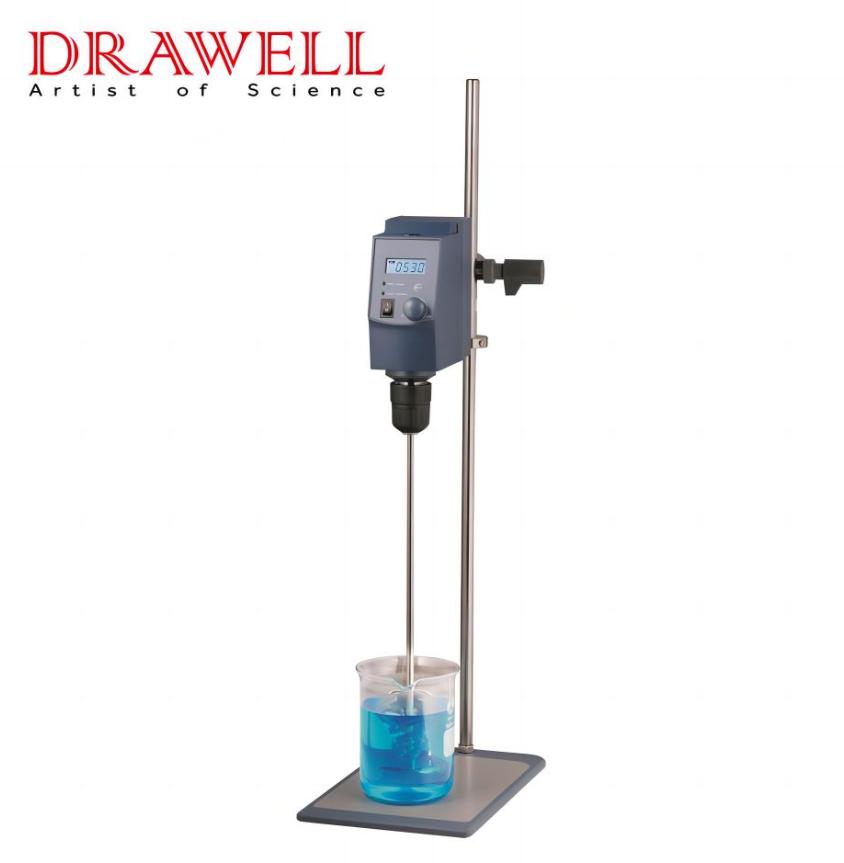
What Types of Digital Overhead Stirrers that Drawell Can Provide to You?
Drawell, a leading provider of laboratory equipment, offers a range of digital overhead stirrers to meet the specific needs of modern laboratories.
Here are 2 main types: LED Digital Overhead Stirrer and LCD Digital Overhead Stirrer. And they both have the following features:
1. Powerful and Efficient Mixing:
Handles diverse tasks with a complete range of functions.
Boasts a novel design for enhanced lab aesthetics.
Delivers reliable performance under demanding workloads.
2. Built for Durability and Safety:
Equipped with a long-lasting brushless DC motor, ideal for continuous lab use.
Features automatic overload protection for safe operation in various applications.
Operates in a wide range of temperatures (5-40°C) and humidity (up to 80%RH).
3. Intuitive and User-Friendly Controls
Ensures smooth startup at low speeds for added safety and user comfort.
Provides precise digital speed control and clear LCD or LED display for easy monitoring.
Offers convenient button controls for forward and reverse operation.
4. Tackles Challenging Liquids:
Capable of mixing even high-viscosity liquids with ease.
This rewrite emphasizes the practical advantages of the stirrer, making it more appealing to potential users. It also avoids technical jargon and focuses on clear, concise language.
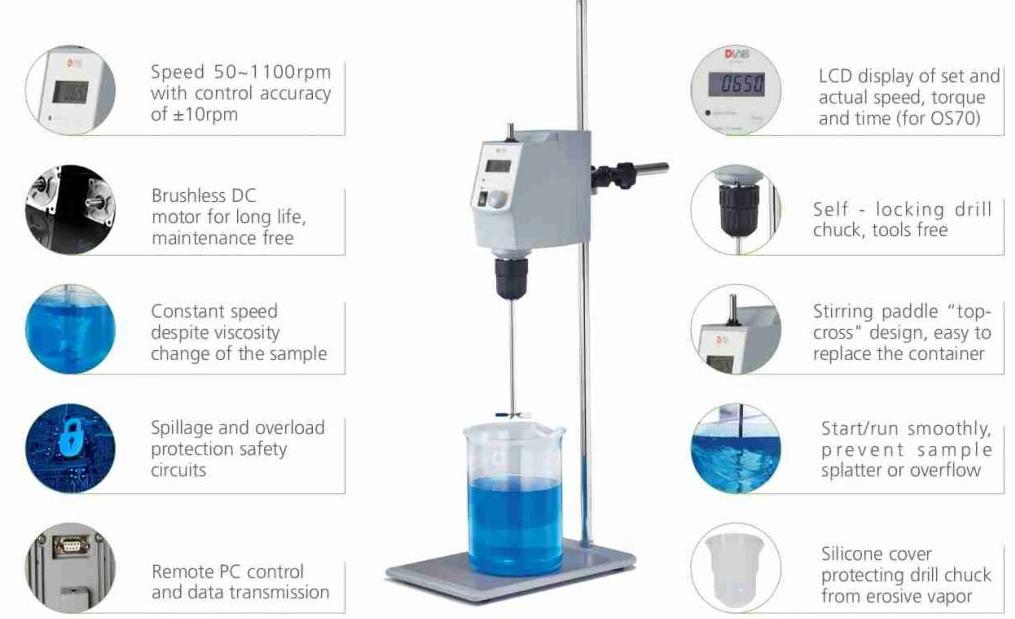
Common Problems, Solutions, and Safety Instructions for Digital Overhead Stirrers
Common Problems and Solutions
Despite their reliability, digital overhead stirrers may encounter common problems during operation. Some of these include:
- The stirring rod not spinning properly: This can be caused by a number of factors, such as a loose chuck, a damaged stir bar, or a worn-out motor. If the stirring rod is not spinning properly, check the chuck to make sure it is tight, replace the stir bar if necessary, and contact the manufacturer if the problem persists.
- The motor overheating: This can be caused by overloading the stirrer, using it in a hot environment, or a lack of ventilation. If the motor overheats, turn off the stirrer and let it cool down. Once it is cool, check the ventilation and make sure that the stirrer is not overloaded.
- The digital display not working: This can be caused by a loose connection, a faulty circuit board, or a software problem. If the digital display is not working, check the connections to make sure they are tight. If the connections are tight, contact the manufacturer for assistance.
Regular maintenance, proper calibration, and adherence to manufacturer guidelines can minimize the occurrence of such problems and ensure optimal performance of digital overhead stirrers in the laboratory.
Safety Instructions:
- Ensure to wear personal protective equipment in hazardous medium processing and avoid the risk of splashing.
- Read the operating instructions before the unit set-up, follow the occupational health safety guidelines, and accident prevention regulations.
- Don’t touch any rotating parts of the instrument during operation.
- Set up the device in a spacious area on an even, stable, clean, non-slip, dry and fireproof surface.
- When setting the rotation speed of the instrument, please be aware of the container under the stirring paddle to avoid splatter of samples. If the instrument runs unsteadily, please lower the motor speed.
- The stirring paddle must be secured tightly to the main unit and place the container properly and avoid any possible danger.
- The preparation of flammable samples might result in danger. Only prepare samples that will not incur any dangerous reaction during operation.
- Only professionals can open the instrument. Please pull out the power plug before opening the instrument.
- Ensure that the label indicated the correct voltage before connecting the device to power supply.
- Do not cover the instrument during operation. Avoid the instrument and its accessories from impacted or extruded.
- Keep away from high magnetic field effects.

Conclusion
In conclusion, digital overhead stirrers have revolutionized the way we mix in the modern laboratory. Their accuracy, convenience, and versatility make them an essential tool for any scientist seeking to achieve consistent and reliable results. From delicate biological samples to viscous industrial solutions, these instruments tackle a wide range of mixing challenges with ease.
As a China leading laboratory overhead stirrer manufacturer, Drawell is committed to providing researchers with the tools they need to push the boundaries of their work. We offer a diverse selection of high-quality digital stirrers to meet the specific needs of any application, from basic research to demanding industrial processes. Unlock the full potential of your laboratory with Drawell – your trusted partner for all your laboratory equipment.

